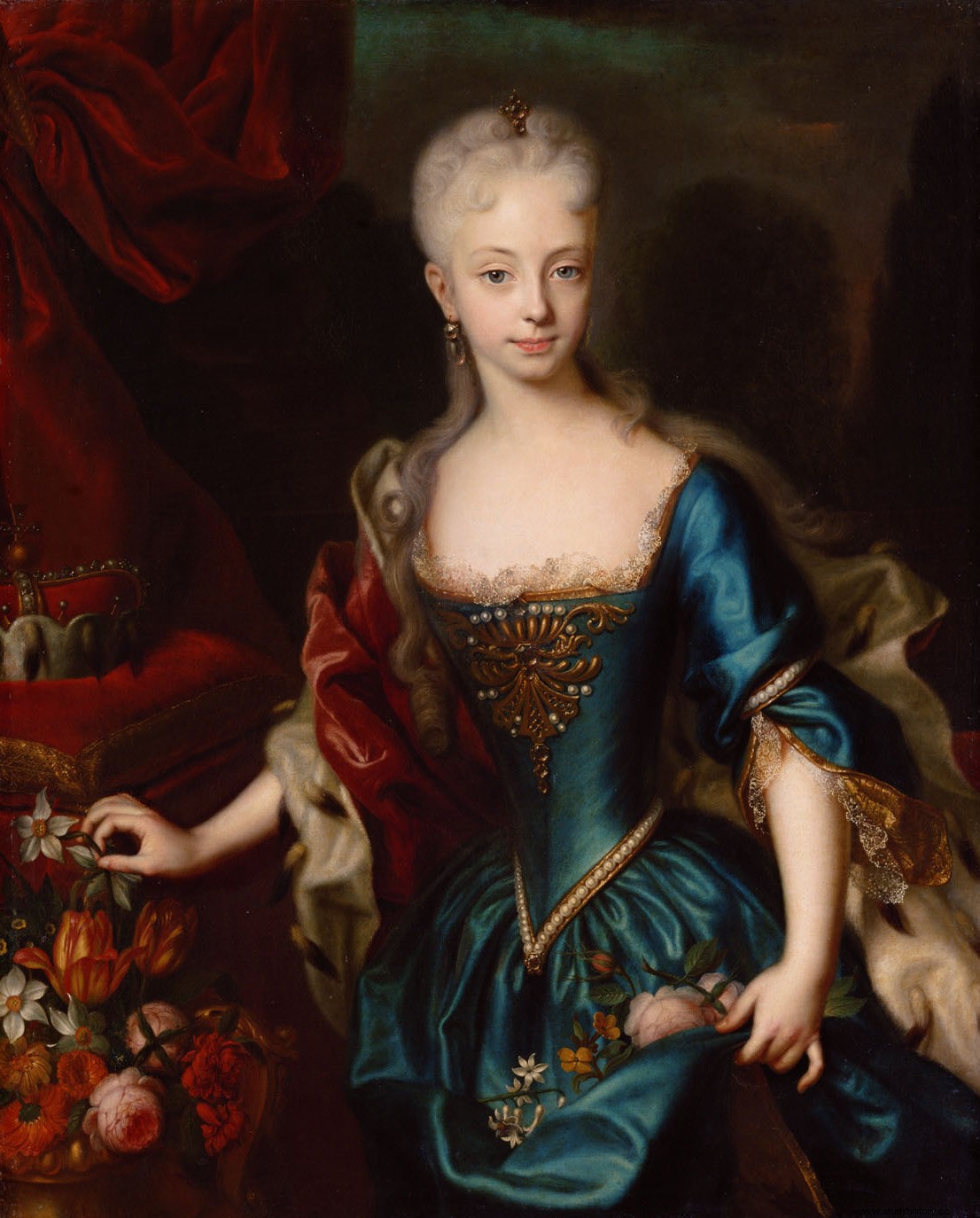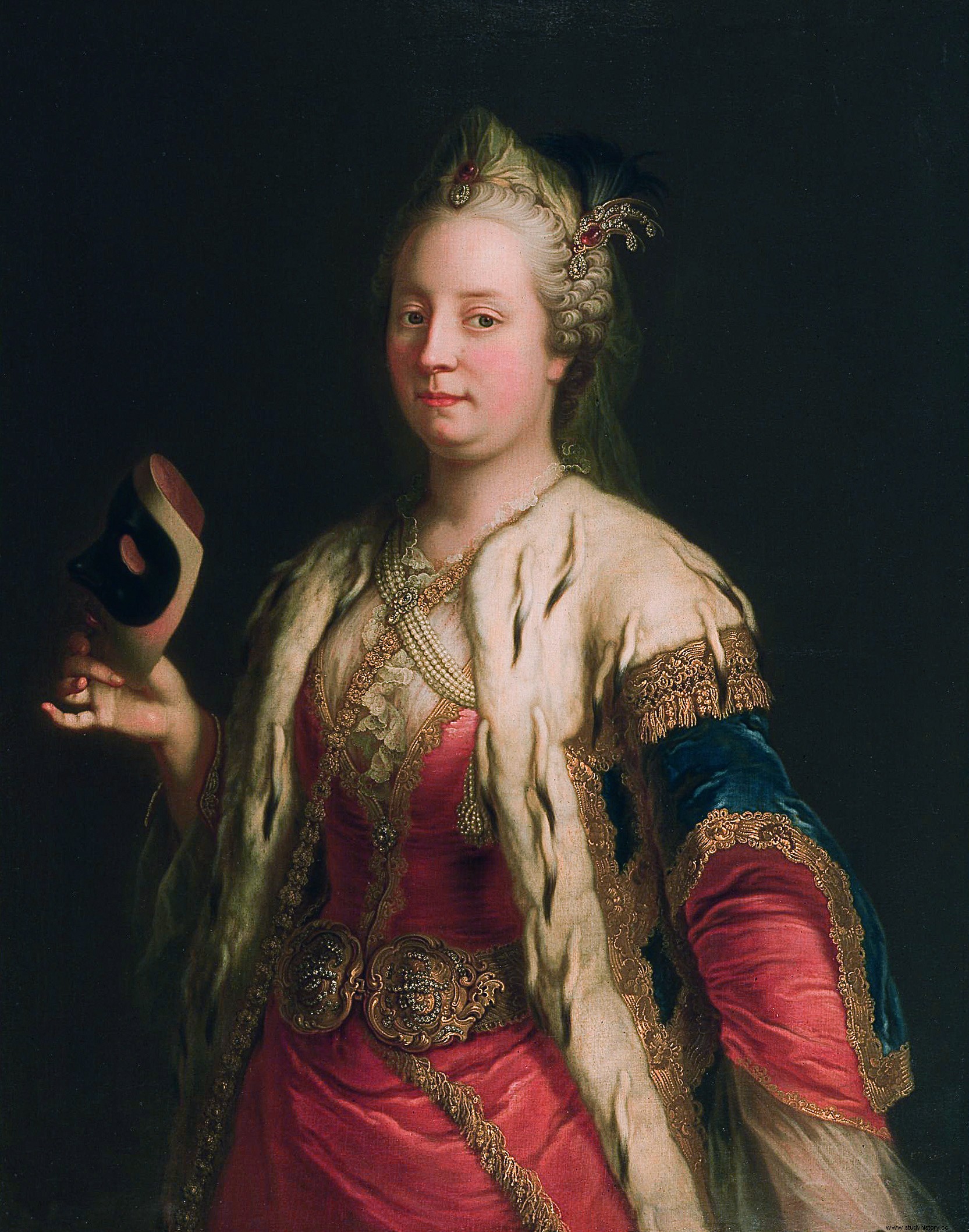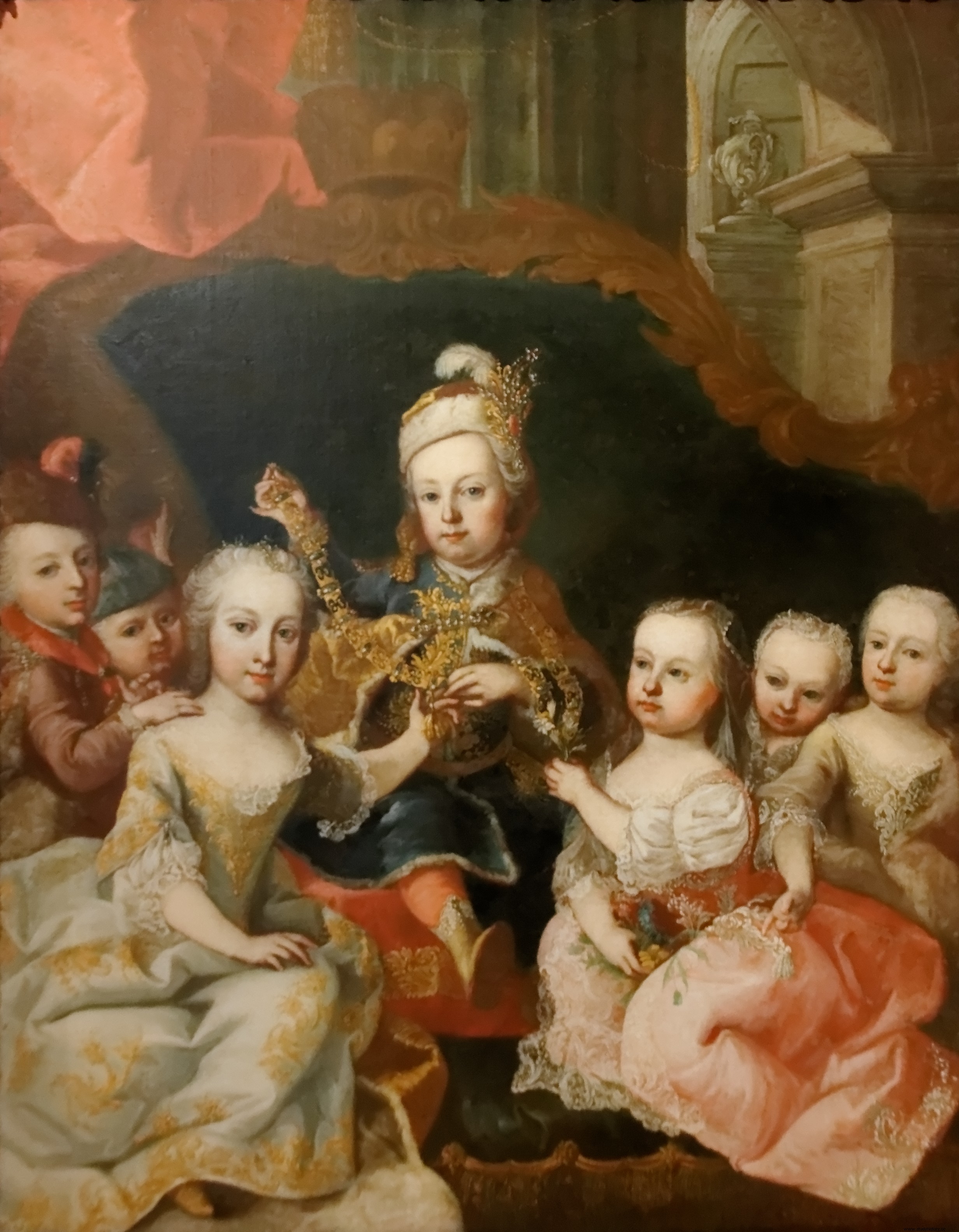Nicknamed “The Great”, Maria Theresa of Austria is Archduchess of Austria, Queen of Hungary, Bohemia and Croatia. Reigning for 40 years, she is one of the greatest rulers of her time.
A reserved child
Daughter of Empress Elisabeth Christine and Emperor Charles VI, Marie-Thérèse Walburge Amélie Christine de Habsbourg was born on May 13, 1717 in Vienna, shortly after the death of her parents' first child. The couple will have four children, but only two will reach adulthood:Marie-Thérèse and her little sister Marie-Anne, born the following year.
A serious and reserved child, Marie-Thérèse received the education of young noble girls of her time. Her father does not allow her to learn horse riding, but she enjoys singing and archery. The Jesuits who educate her teach her Latin and she also learns drawing, painting, music and dance. From the age of 14, Marie-Thérèse can attend council meetings but her father, hoping to have a son, does not prepare her for the management of state affairs.

François-Etienne de Lorraine
During her youth, many marriage options were considered for Marie-Thérèse:she was first engaged to Léopold-Clément, heir to the throne of Lorraine, but he died of smallpox at the age of 12. Then promised to King Charles III of Spain, Marie-Thérèse was finally engaged to François-Etienne, brother of Léopold-Clément and Duke of Lorraine, with whom she fell passionately in love. In February 1736, at the age of 19, Marie-Thérèse married François-Etienne de Lorraine. The couple will have sixteen children, ten of whom will reach adulthood.
In 1738, as negotiated in secret during the peace treaty of Vienna putting an end to the war of succession of Poland, François must yield his duchies of Lorraine and Bar and receives in compensation the duchy of Tuscany. Grand Duchess and Grand Duke of Tuscany, Marie-Thérèse and François made a brief stay in Florence the following year.
The War of the Austrian Succession
Charles VI died in October 1740, and Marie-Thérèse, his heiress by right, found herself in a complex situation:her allies refused to support her, Austria was impoverished by recent wars, the army was exhausted, her father did not train her in the affairs of state and her legitimacy is questioned, especially as she gave birth to three girls and no boys. Also, as a woman, she cannot be elected Empress of the Holy Roman Empire. The situation, explosive, leads to the war of succession of Austria where oppose it in particular Prussia, Bavaria, Saxony and France. In 1742, against the wishes of Charles VI, Maria Theresa's cousin by marriage Charles Albert of Bavaria was elected emperor under the name of Charles VII.
Marie-Thérèse begins by consolidating her power in Austria by having herself recognized as sovereign – to appease those who judge that a woman cannot reign, she takes the title of "king" of Hungary -, and manages to ally herself with the England and the Hungarian nobility against the States which have betrayed it by rising up against it. So that he could be elected Emperor of the Holy Roman Empire, she named Francis co-ruler of the lands of Austria and Bohemia, while retaining his control over state affairs.

The Holy Roman Empire
At first and against the advice of her husband, Maria Theresa of Austria launched her forces into battle against Prussia, which wished to monopolize the rich mining region of Silesia; she manages the war and her many pregnancies head-on, saying afterwards that if she had not been pregnant, she would have gone to the front herself. She ends up being forced to accept negotiations in exchange for support.
In 1745, on the death of Charles VII, Francis was elected Emperor of the Holy Roman Empire and took the name of Francis I. Marie-Thérèse then became empress consort of the Romans. The war of succession ended in 1748; Austria has Silesia, but the other Habsburg territories are saved, the Empress sees her place on the throne confirmed.
Marie-Therese the Great

François is emperor and Marie-Thérèse empress consort; but she is willful, pugnacious and courageous, and imposes herself at the forefront of the affairs of state. Quickly, she was simply called Empress and nicknamed “Marie-Thérèse the Great”; she is the one who wields the power.
The youngest of her sons was born in 1756 and Marie-Thérèse must already lead the negotiations for the marriages of her elders. A devoted but authoritarian mother, she puts diplomacy first and her children's weddings are all opportunities to forge alliances. His son Joseph married Marie-Isabelle de Bourbon-Parme, his daughter Marie-Christine the Duke of Saxony, and his daughter Marie-Antoinette (1755-1793), married in 1770 the Dauphin of France, the future Louis XVI. Marie-Thérèse writes every week to her children, and does not hesitate to reprimand them if their behavior does not satisfy her.
Reforms
François died in 1765 and Marie-Thérèse of Austria, still very much in love with her husband, was overwhelmed by grief. She considers abdicating the throne, but her son Joseph seems too bossy and harsh to her and she chooses to keep power.
Marie-Thérèse carried out several reforms to modernize the empire, strengthen her army and replenish the coffers of the State by endeavoring to tax the clergy and the nobility; although a partial success, this last measure allows him to greatly improve the economy of the empire. Marie-Thérèse also put in place an important public health policy, fighting against infant mortality, making autopsies obligatory for the dead in Graz hospital and controlling the creation of new cemeteries. In addition, she banned the burning of witches.
Marie-Thérèse also strives to reform education and makes school compulsory for children aged 6 to 12. This measure met with hostility in many villages; Marie-Thérèse tries to put an end to the resistance but only partially succeeds.
End of reign
In 1767, Marie-Thérèse of Austria fell victim to a smallpox epidemic which carried off one of her daughters-in-law and one of her daughters; she survived it but suffered from health problems such as coughing, fatigue and shortness of breath.
In November 1780, she caught a cold and died a few days later, on November 28, 1780, surrounded by her remaining children.
